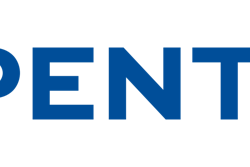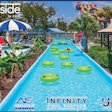
Perhaps the largest regulatory change in the history of the industry is approaching, and everyone who installs, sells
or replaces pool pumps is preparing for it.
Fifteen months from now, in July 2021, in order to comply with new Department of Energy regulations, about 80% of the pool pumps currently sold in the residential market will go away. Here, the phrase "go away" means that these non-compliant pumps will no longer be manufactured, and they will quickly become obsolete. Non-compliant pumps in the distribution pipeline as of that date (existing stockpiles at distributors and pool companies) can still be installed, but no new ones will be made.
By late 2021, leftover inventories of these non-compliant pumps will surely be exhausted, and they will never be sold or installed again.
When the dust settles, in the range of .711 hydraulic horsepower to 5.0 hydraulic horsepower, variable speed will be the law of the land.*
Until now, most of the industry buzz has been about the DOE regulations themselves — which pumps will be allowed, what to make of the new horsepower rating system and new terminology (old terms like "rated horsepower" are also going away), etc.
Ultimately, however, this enormous regulatory change will come down to a retailer, builder or service pro explaining to a homeowner how much better it is to have a new, efficient variable speed pool pump than an old, inefficient single- or two-speed pump. Despite the higher cost.
It's true that homeowners will have no choice — the only legal options (again, in the hydraulic hp range of .711 to 5.0) will be variable speed pumps — but the way the change is viewed by customers will depend to a large extent on how pool pros explain it. Because in truth, variable speed pumps and the advantages that result from lower rpm and lower flow rates are better for consumers and better for the country in the long term. They just cost more up front.
RELATED: New DOE Rules Set to Eliminate Many Single-Speed Pool Pumps
Getting homeowners to look beyond the sticker price and see the whole picture is a job that will fall to industry professionals: They will have to sell the benefits of more expensive, higher efficiency pumps. The good news is that many people in the industry have been doing this for some time. They've become experienced at finding the words that make a homeowner nod and say yes.
We talked to some industry pros who have been successful at selling variable speed pumps. They offer a great variety of approaches and techniques, from data-based marketing to old fashioned handshake selling. They have found that much depends on the individual and even the area of the country: some places care a lot more about the environmental argument, for instance, while other places have high utility rates where annual savings from VSPs can quickly rise to four figures. Some places have tightly packed neighborhoods where the advantage of quiet variable speed operation is a deal-maker. The key is to find the right combination of benefits to unlock a customer's objection to the higher initial cost.
PLANETARY CONCERNS
Michael Berggren, owner of Berggren's Backyard Oasis Pool Construction & Service in Washington state's Columbia valley, discovered long ago that the area's famous environmentalism is the key. When he steps up to a potential VSP customer, that's where he's going first.
"It's that green-clean argument," he says. "I've never really had to go anywhere else in my sales conversations. The energy-efficient discussion sells them, and I don't get additional objections. Around here, everyone wants to feel like they are doing their part to take care of the environment."
And that goes for both new construction and the aftermarket, he says. "We actually push variable speed pool pumps despite the fact that we have the cheapest electricity in the United States, so the savings aren't as great as in some places. But here in the Northwest, our region is very interested in being eco-friendly and doing their part to ensure the health of the planet.
"I mean, even though our electricity is cheap, why be wasteful and use more electricity than is needed? Why waste power?"
 Jose Garcia (right) with the Barefoot Pools VSP display.
Jose Garcia (right) with the Barefoot Pools VSP display.
SHH...QUIET
Jose Garcia at Barefoot Pools in Phoenix started selling VSPs in 2011. He says the company's strong growth is due in part to the loyalty of customers who appreciate a company that has their best interests at heart. An example of that is helping them understand how the benefits of VSPs outweigh the cost.
"We started selling variable speed pumps to pool owners when local utilities began offering large rebates to pool owners who upgraded their pools with variable speed pumps," he says. "Although the rebates from the utilities ended almost five years ago, we are still replacing around 250 pool pumps from single to variable speed every year because of the other added benefits that come with a variable speed pump.
"And one of the important ones is: they're quiet. This might not seem like much of a benefit, but especially in our densely populated areas with lots of pools, a VSP offering much quieter operation means there is less noise pollution for the pool owner and their neighbors — so everyone in the neighborhood gets more enjoyment of their backyard."
RELATED: Selling Variable Speed
The appeal of quiet operation is often dependent not just on the type of neighborhood, but on the proximity of the equipment pad, adds Berggren. "For whatever reason," he says, "many of the pools we service, (we didn't build these pools), have the equipment pad located near the master bedroom. People don't like hearing loud pool pumps going on and off all the time — they just don't want all that noise. So when we install a new variable speed pump, they are super pleased to be rid of the noise pollution."
For customers used to the heavy- bomber drone of a single-speed pump going 3450 rpm, a smooth VSP at 1725 rpm or less can actually sound like it's not working at all. Garcia says that sometimes they have to tell customers to look for water movement in the pool, not the sound of the pump, to know it's working. It's that quiet.
 Erik Johnson at Underwater Pool Masters explains the benefits of VSPs. Johnson notes the ability to have a conversation next to three running pumps provides powerful evidence of their quiet operation.
Erik Johnson at Underwater Pool Masters explains the benefits of VSPs. Johnson notes the ability to have a conversation next to three running pumps provides powerful evidence of their quiet operation.
Erik Johnson, service manager at Underwater Pool Masters in West Boylston, Mass., CSP and CPO, uses an in-store display to subtly make the point about quiet VSPs. The display is meant to show the savings in electricity, "but one of the main reasons I set it up is that it's really hard to get the customer to understand how quiet the variable speed pump will be," he says.
"When you tell them that the variable speed pump is so quiet you will barely hear it, the customer tends not to believe you. But then when you're standing next to the display with these three variable-speed pumps running and you are easily carrying on a conversation, that really sells it. The display has 30 gallons of water running through it, and you just hear a hum. That helps them understand how quiet the variable speed pump is, rather than their loud single speed pump that their neighbors have been complaining about."
Other, less obvious benefits of a low- flow regimen include better filtration and better water chemistry overall.
Filters operate better at lower flow rates because dirt and debris are not driven deep into the media, and thus can be removed when cleaning. That is, media will release dirt better on a backwash or a spray off when it hasn't been planted deep by a full-out single- speed pump.
The effect on chemistry and clarity is something pool owners can see with their own eyes, Garcia says. "At first customers were skeptical that this new pump might run 23 hours a day and keep the pool water cleaner than their old single speed pump running eight hours a day, but pool owners would call a few days later to say they immediately noticed their pool water looked cleaner and clearer. The filters work better with a VSP, and the pool equipment lasts longer because there is less strain put on the system.
"Also, having the pump run for more hours a day keeps the pool water healthier. Stagnant pool water can more easily develop algae or other waterborne annoyances."
SHOW 'EM THE MONEY
Some people believe that money is the biggest argument against VSPs, but in actual fact, it is the biggest argument for VSPs. And the only thing required to understand it is to step back and look at the big picture. Yes, the day you buy a VSP instead of a single-speed pump, you are out $800 — the difference in price. But two years later, you've won back that $800 in lower utility bills, and from that point on, your investment is paying off every month.**
The key is to show customers the savings in black and white. Online cost calculators, available as phone apps or on tablets and desktops, are widely available and the best pump salespeople have them ready to make the cost argument clearly.
Johnson uses UPM's in-store display to make the point in a larger, more tangible way (see picture, page 64). Customers can see the pumps in action and the wattage consumed for themselves. It's particularly important to get them in front of the display, because the customer's backyard, right after a single speed pump failure, is not as conducive to sales.
RELATED: Technically Speaking: Variable-Speed Motors
"Here in New England," he says, "we have a very short swimming season. If we are lucky, pools are open for 2-3 months, tops. It's harder to up-sell a customer to a variable speed pump when I'm in their backyard dealing with an issue with their single speed pool pump. In these instances, the customer is mostly just looking to change the motor and get the pool running for their weekend pool party. They don't want to think about the energy savings they might gain over the next few seasons. Again, because our season is so short, we struggle to get the customer to think about the longer- term savings — at least when we are in the field.
"We are now putting a major emphasis on educating the consumer about this new DOE legislation and our in-store display is helping start the conversation. When it comes to explaining the energy savings, I use the comparison of LED lights to incandescent lights — consumers already understand how LED lights in their home cut their utility bills. The fact that we are having this conversation standing next to the pump while it's running really helps sell the product.
"And when customers come in, we always hear complaints that as soon as they open up their swimming pool for the summer, their electrical bill goes up $100 a month. We use this complaint as a way to introduce variable speed pumps. When I explain that they will cut their electrical bill in half each month, they start to get interested."
STRAIGHT AND (NOT) NARROW
 Garcia swaps out a pump in a tight space.
Garcia swaps out a pump in a tight space.
The variable speed movement is all about saving energy and money at the pump. That's why the DOE took the major step of outlawing the sale of 80% of the current skus in the large residential pump range. But it's hard to talk about pumps and energy without talking about application issues like variable speed programming skills and plumbing. A spaghetti bowl of narrow pipes emanating from the pad, twisting and turning at right angles defeats the potential of a variable speed pump to save energy and money, and drives the total dynamic head of the system through the roof. (In addition, it can create a nightmare for anyone trying to service the pool.)
"I have a degree in hydrology," Berggren says, "so I understand plumbing the importance of using the correct diameter or plumbing to keep from creating undue stress on pool equipment. One of the best things about now building our own pools is that we can now also construct our own equipment pads that are well thought out for serviceability. And of course, our equipment pads are eco- friendly because the equipment we use is energy efficient. It's something we now promote and is a part of our core business.
"We always start by doing a TDH test (total dynamic head test) to test the resistance in the plumbing and then dial in the variable speed pump accordingly. Because when you are changing out the pumps on existing pools, you don't have access to the plumbing, which is most likely underground. We are able to set limits on the pump speed, so it doesn't max out the plumbing of the pool."
When the DOE regs come online in 15 months, it won't be a big change for Berggren, as he already puts them on 100% of new builds and as many replacements as the market will bear. "I originally thought selling variable speed pool pumps was going to be a hard sell at first, especially since our electricity is so cheap around here. But I was surprised at how easy it has been to sell these energy efficient pool pumps.
"Now that the DOE legislation has been officially announced, we are telling all of our customers that this is the time to make the change because soon it will be mandatory."
*Caveat: This statement is based on current technology. That is, no single speed or two speed pump in this horsepower range is currently compliant. It is always possible that new technology would be developed in the future that would enable a single or two-speed pump to meet the new DOE regulation in this horsepower range.
**Analysis based on 1.5 hp SS pump running 24 hrs/day, and VSP running 20 hrs/day on low, 4 hrs/day on high, 5 months/year, at $0.12/kWh, based on 5-year analysis provided by Pentair.





































